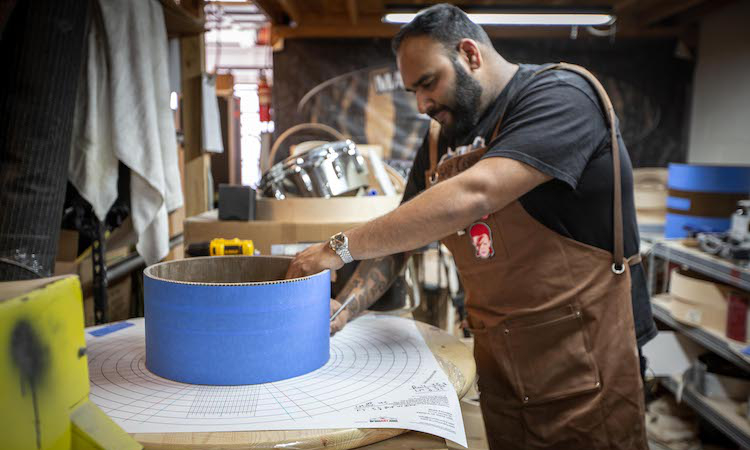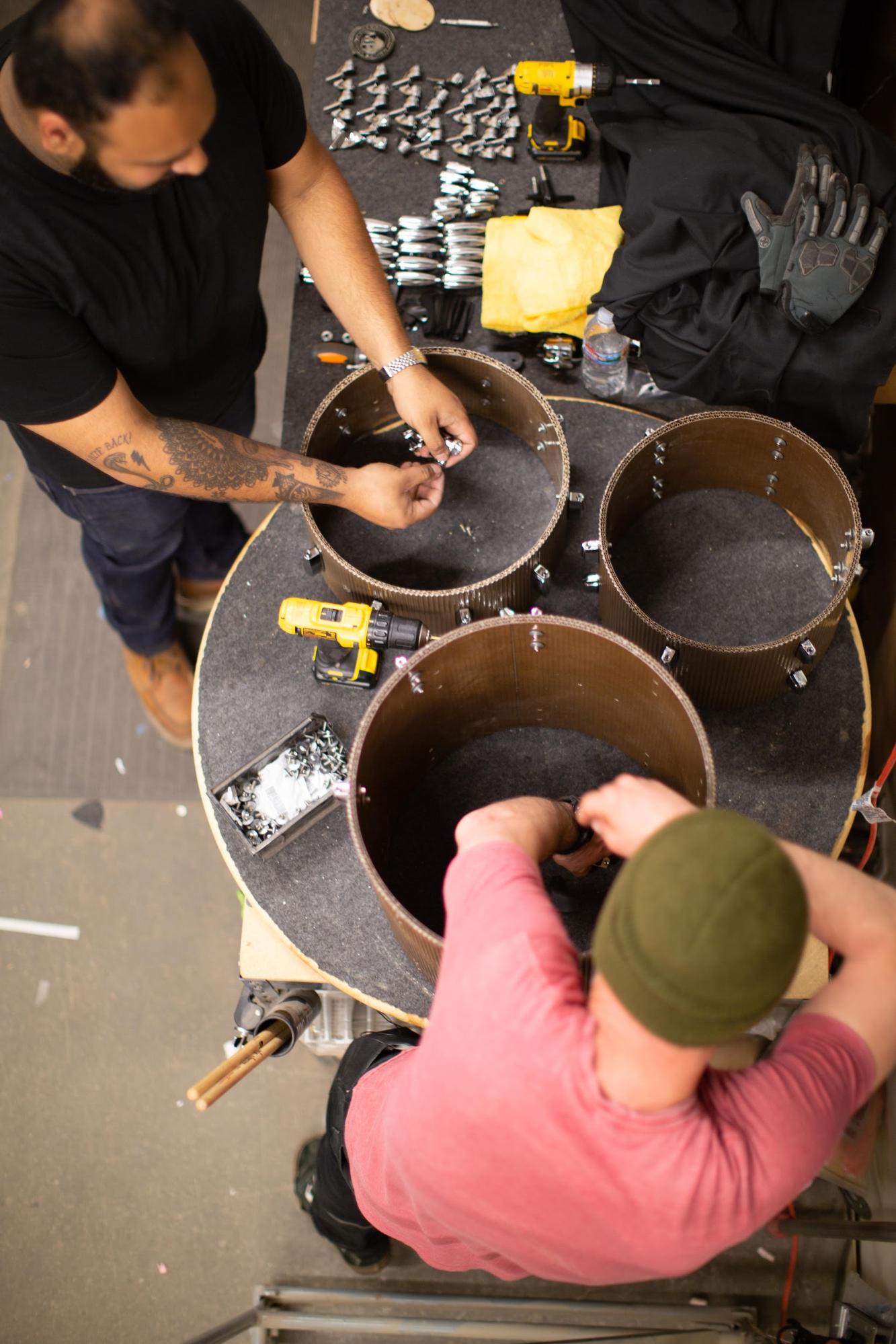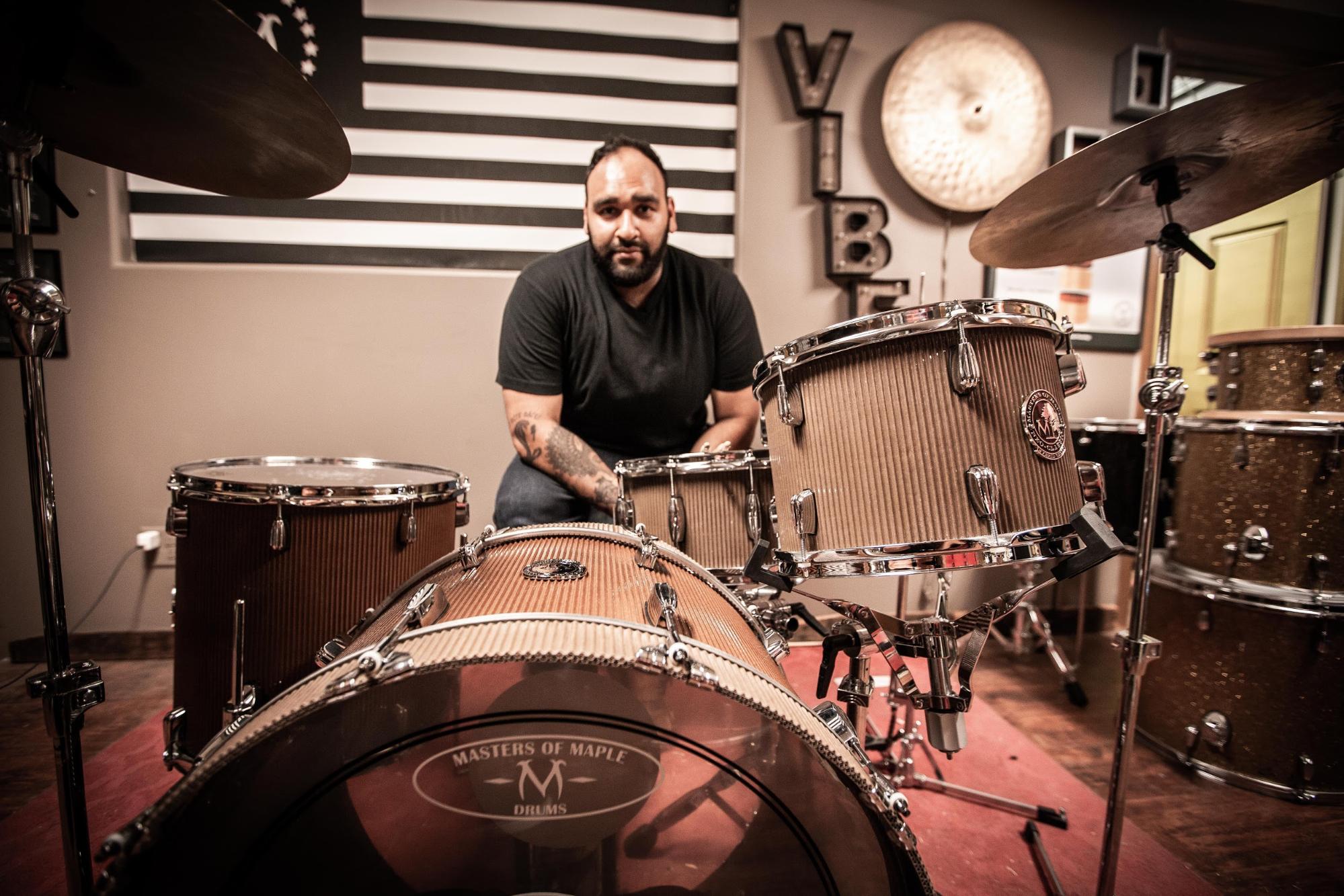Cardboard Chaos Drum Kit — Behind the Beats
August 19, 2019

Our Cardboard Chaos drum kit has been a resounding success, and we keep getting one question from fans: how the heck did we pull off this impossible task??
Here’s your answer! Today we’re taking a deep dive into the build process with one of the masterminds behind the drum kit: Sahir “Sai” Hanif, president and CEO of Masters of Maple.
Sai’s been playing drums since he was six, and started his own company at age 14. Today he tours with comedy shows and rock bands, including some big names like Arctic Monkeys, Cage the Elephant and The Wallflowers.
So trust us when we say this dude knows acoustics, inside and out.
Throughout the years Sai has worked with all sorts of exotic materials to make drums, but cardboard was a first for him. “When I first got the call about making a cardboard drum, I thought it was a joke,” he admits. “I wasn’t sure if it was even possible, but once I saw the cardboard guitar I was sold on the idea.”
For the most part, Sai found that the construction of the cardboard drum kit was similar to building a traditional wooden drum. His concerns about cardboard melted away when Ernest’s Director of Design Solutions Mike Martinez delivered the beautiful shells.

“Traditional wood shells go through a hydraulic press and become super rigid. That’s how the shell stands up to all the tension from playing the drum,” Sai explains. “Mike coated the cardboard with structural epoxy, which was a great substitute that made our shell just as rigid as wood.”
How much tension does a drum head have to withstand, you ask? A bunch! Depending on the type and size of your drum, it’s anywhere between 70 and 90 units of timpanic pressure — and that’s before a drummer starts wailing on it. The fact that our cardboard shell took the tension like a champ speaks wonders of our favorite packaging material!
Even with that strength, preparing the cardboard shells for assembly was a nerve-racking experience. In order to give a drum its voice, you have to cut bearing edges — which entails a super sharp blade cutting through the shell at crazy-fast RPMs.
“I told Mike he might wanna look away for this part,” Sai laughs. “But the fact that cardboard stood up to the process blew me away. It’s a real testament to the Ernest team!”

Not only did our cardboard drum kit survive the construction process, it thrived! Sai says the kit sounds just like acrylic and fiberglass, which were popular drum materials back in the ‘70s. Some of Led Zeppelin’s greatest tracks were jammed out on acrylic drums, so it’s no wonder our cardboard kit sounds so legendary!
“The reason I love drums is because they’re honest,” says Sai. “Either they sound good or they don’t. Hats off to Mike Martinez, because the cardboard floor tom is one of the best-sounding drums I’ve ever built.”
The Cardboard Chaos never stops! Keep your eyes on Ernest’s social channels to see what we have planned for an encore… and in the meantime, rock out to our exceptional cardboard drum kit performance!
https://www.youtube.com/watch?v=MYMWSZ6nnt4


